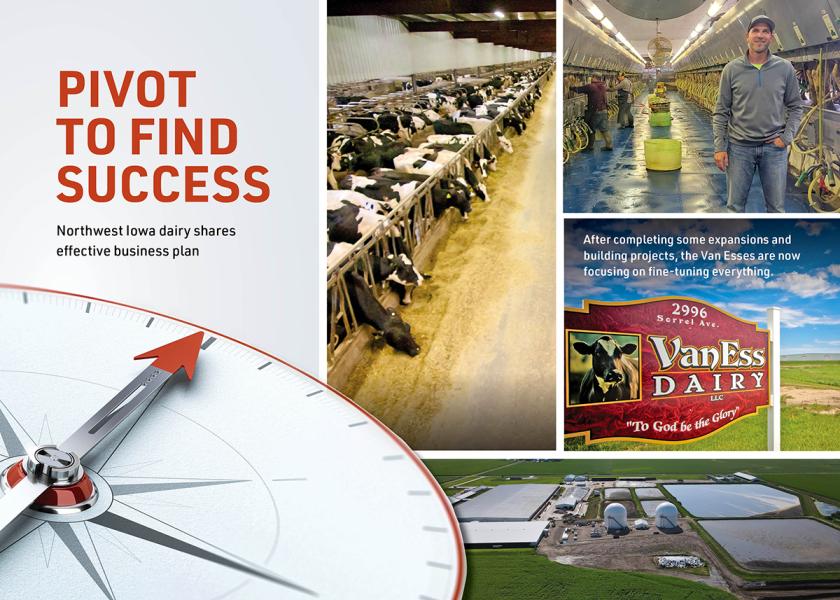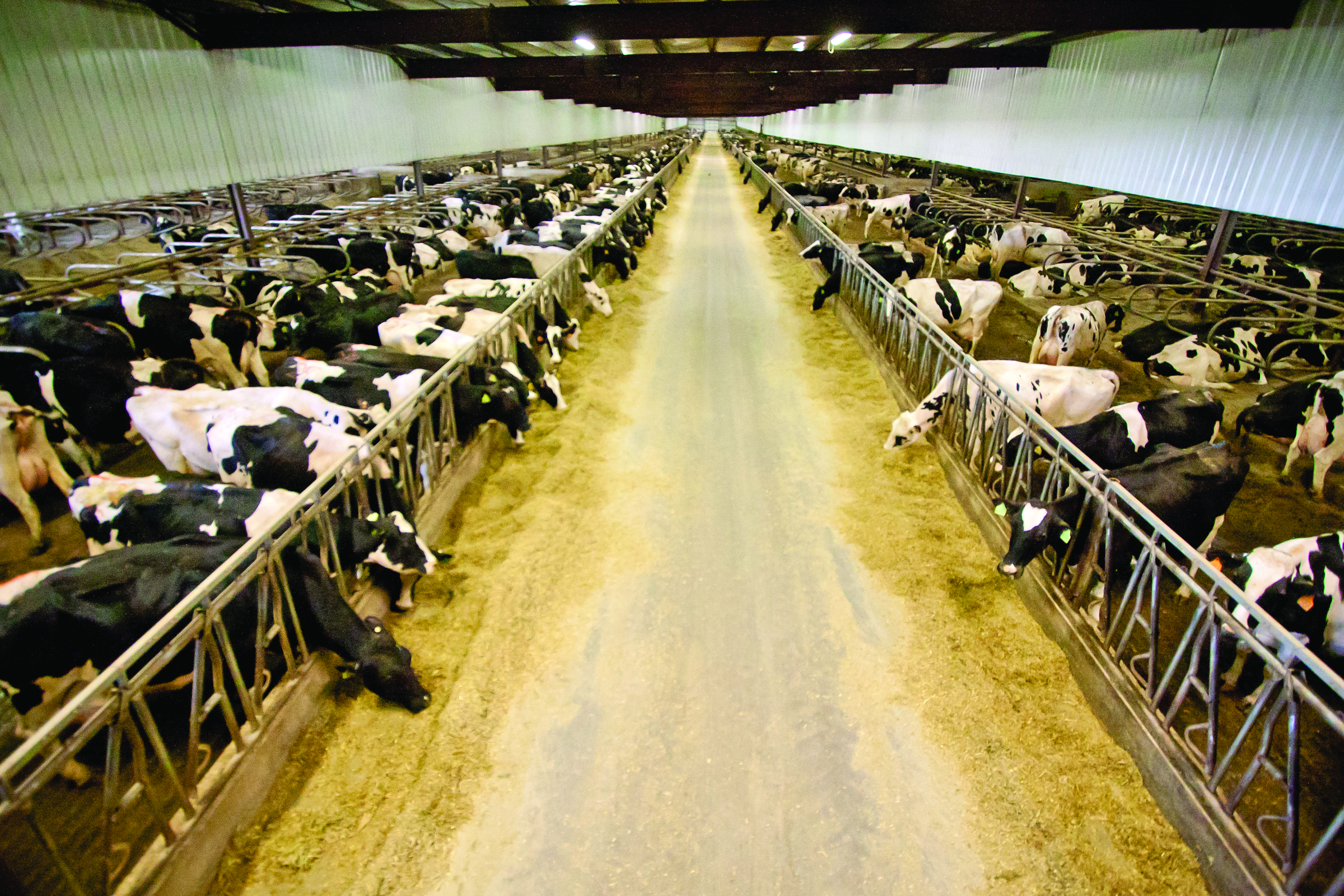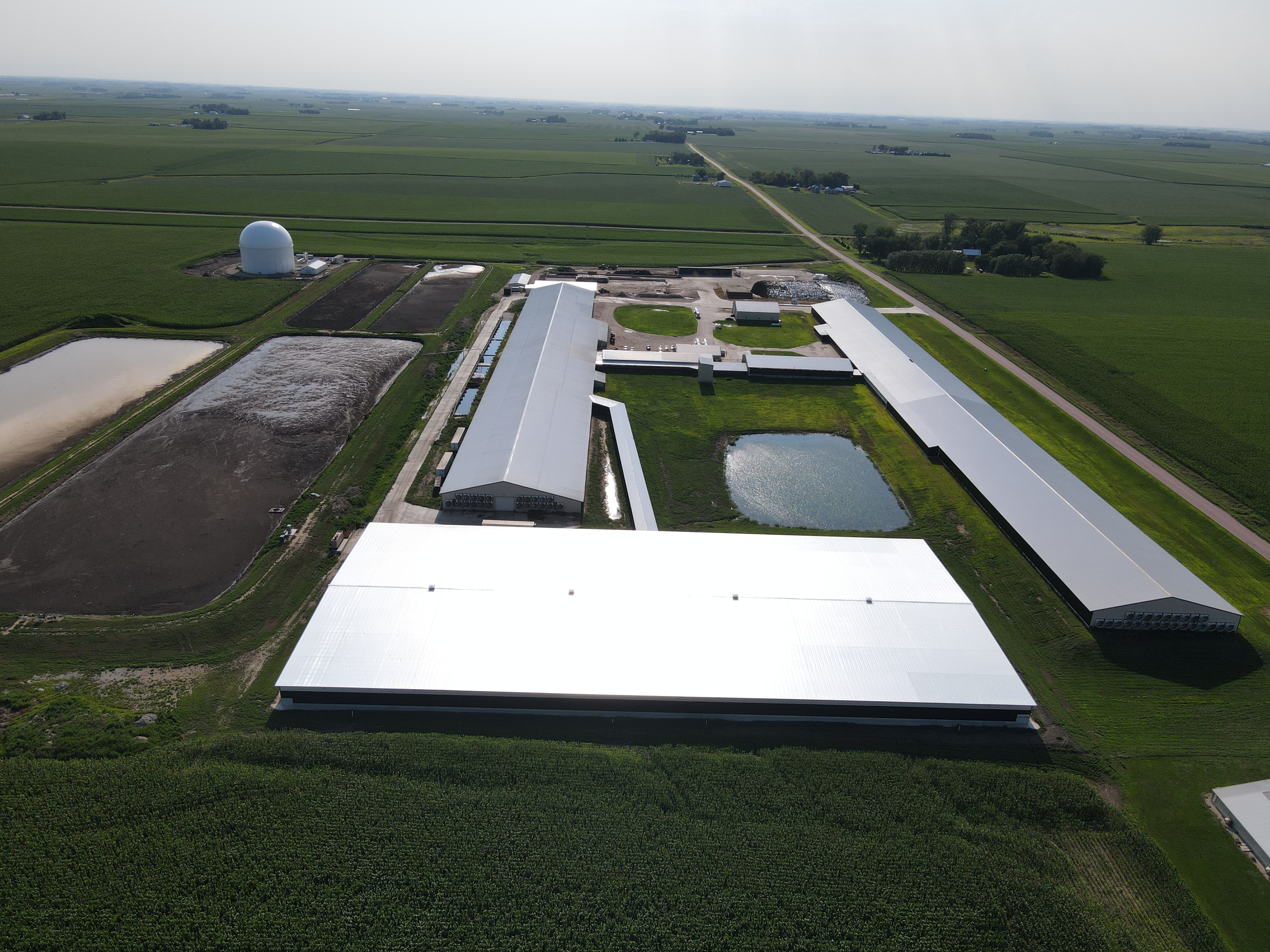Pivot to Find Success

Agility — it can be the difference between those who make it in the dairy industry and those who don’t. Learning to pivot to the next stepping stone to success is what leading dairies do to stay afloat in this volatile economy. The Van Ess family’s ability to think quickly led them to move from Idaho to northwest Iowa to build a new dairy in 2008. Boise processors were full at the time, and not taking new milk, so Iowa was attractive because of its relatively cheaper feed and the fact there was a market for their milk. So, the family packed up and headed east.
Today, Van Ess Dairy in Sanborn, Iowa, milks 5,200 cows on their home dairy. In 2018, they purchased a nearby second farm, Legacy Dairy, with the ability to milk 3,500 cows.
The family grows enough corn silage for half of their dairies needs and purchases the remainder. “When we first moved here, we didn’t farm any ground,” says Jeremy Van Ess. “We’ve slowly bought some land and rented some ground as it has become available.”
Van Ess Dairy is owned and operated by brothers Josh, Jeremy, Chad, Tyler and Todd, and their parents, Harvey and Lisa, who all play an active role in the business.
All the boys oversee different areas of the operation, including crops, harvest, manure management, trucking and the heifer site. Van Ess admits they don’t have a master plan when it comes to how many cows they plan to milk in the future but says they have always been forward thinkers.
“We’ve always leaned into to new ideas and opportunities,” he says.
Open to New Opportunities
As of spring 2023, the Van Ess family raises their beef-on-dairy calves and sells them at five months of age and about 500 lb. through the internet. Previously they sold day-old calves.
“Down the road, we wouldn’t mind finishing out the cross calves once the market softens up a bit,” Van Ess says.
The operation’s black calves and dairy calves are sent to a custom grower in Texas. In the very near future, a methane digester will be up and running. The family has installed new sand separation and manure thickening equipment and is looking at ways to generate revenue streams from these systems, as well as from the manure after it has been through the digester.
“There’s several things we can do after the digester is up and running, such as trying to get more phosphorus out if needed. And, there are a number of things on our radar with our nutrient management plan that we can look into,” he explains.
Farming more ground is an option for the Van Ess family but milking more cows hinges on processing opportunities.
“We’d love to expand, but it appears like it isn’t going to happen for a while, but you never know when an opportunity might present itself,” Van Ess adds.
Tools to Manage Risk
The Van Esses have actively participated in the Dairy Revenue Protection and Livestock Gross Margin programs the past few years. They also hedge some of their milk.

“We don’t outright sell,” Van Ess says. “We’ve been pretty firm about not putting a top on when marketing milk just because we don’t want to take that opportunity off the table.”
While the Van Esses use several tools to manage risk, they did not have any protection in place over the past summer months.
“We were kind of open, which was a bummer, but we try to really focus on costs,” Van Ess says. “We are aggressive with buying and contracting feed.”
When it comes to cow management, the family is able to effectively use both sites. For example, Legacy Dairy is set up to milk all first lactation cows, which hovers around 85 lb. of energy corrected milk a day with twice a day milking. The home dairy, Van Ess Dairy, milks all the older-lactation cows three times a day and averages around 100 lb. of energy corrected milk a day.
Good Advisers Help
Every Tuesday, the Van Ess family sits down for a farm business meeting. From milk production and finances to marketing and crop production, the focus of the family-owners meetings differs from week to week.
“We try to keep everyone in the loop,” he says. “We’ve been able to capitalize on things because we have these meetings; this allows for good communication, along with working with good bankers, accountants and our family’s professional development coach who help position our farm the best we can.”
Van Ess says they don’t strive to be the lowest-cost producers, but they want to be on the lower side when it comes to costs.
“We don’t want to give up production because that is what helps pay the bills, but we look at what we can cut or reduce without hurting production or herd health,” he says. A good labor force is essential to making an operation successful. “We have been blessed with great employees who really have enabled us to do what we know how to do best, which is take great care of our cows, and that will hopefully allow us to be successful into the future,” Van Ess says.








